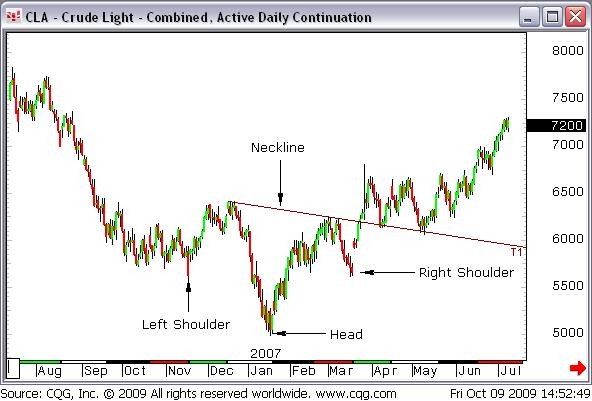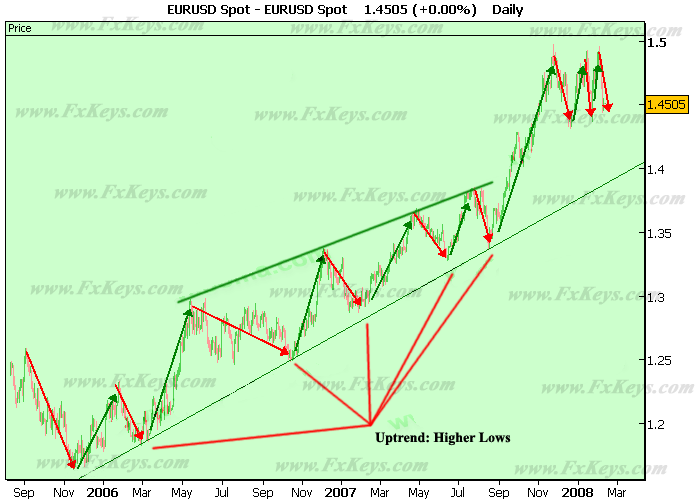Technical Analysis Trading Double Tops And Bottoms
Post on: 16 Март, 2015 No Comment

Basic Technical Analysis Trading Patterns
Last week I did a short tutorial on basic technical analysis trading patterns. I wanted to show beginners as well as seasoned traders that simple technical analysis trading patterns are viable and important tools that should not be ignored by traders. I received a few emails with questions and comments asking me to show how to use these patterns to enter the market.
Its one thing knowing how to identify a pattern thats developing and its another totally different experience trying to understand when to enter and exit markets when using technical patterns. The reason for this is rather simple, since patterns are subjective in nature they are harder to interpret than say a moving average or other technical indicators that are based on math or statistical formulas.
With indicators you know exactly where to enter and exit your orders. With chart patterns its easy to misinterpret the chart as well as your entry and exit point.
Ignore Complicated Technical Analysis Trading Patterns
One of the first things you want to do is ignore any pattern that seems difficult to interpret or seems overly confusing. There is always another opportunity in the market. Dont feel like you have to trade every pattern that comes along. Stick to basic patterns such as head and shoulders, double tops and bottoms and triangles till you get a good feel for these, only then should you start experimenting with more advanced patterns.
I know a small traders group in Texas that make a wonderful income trading 3 different trading patterns day in and day out for the last 10 years.
Learn To Trade Double Top And Double Bottom Patterns
The pattern I want to focus on today I one of those classic chart patterns thats been around for over 100 years. This pattern works with stocks, ETFs, futures and foreign currency markets. The double top and double bottom pattern is very flexible and can be utilized for day trading, swing trading and long term investing. Many swing traders use this pattern with stocks and thats what Im going to cover in todays tutorial.
The First Step Is To Identify First Swing Low
Typically you want to keep track of stocks or other markets that are making a minimum of 50 day highs or lows. I typically start looking for double tops and double bottoms by going through stocks and other markets that are making yearly highs or yearly lows.
Make sure that point one and point three are almost equal to each other and that theres sufficient horizontal distance between the second point and the first and third point. After you see a few patterns like this one you will get a good visual feel for this pattern.
You Have To Keep In Mind That Visual Chart Analysis Is Part Science Part Art
Once the pattern is identified and all three points are determined, you need to find an entry point. I look for a gap to occur within 5 trading days after the third point is made on the chart. If Im trading double bottoms I will look for a gap up within 5 trading days after point three is made and if Im trading double tops I will look for a gap down after point three is made.
Gap up Occurred One Day After Point Three Is Made
In this particular case, the stock gapped immediately after the third point was made. You can give the market up to 5 days to gap up and if no gap occurs the trade is nullified. The stop loss order is placed immediately below the third point in case the trade goes against you when you enter the order.
You Can See Entire Set Up and The Entry From This Example

The stock rallied and never looked back in this example. This is ideally what you want to see when trading technical trading patterns. Keep in mind that the pattern can take anywhere from 2 weeks to 2 months to develop, assuming you are using daily charts. Many traders apply this pattern to 5 minute bar charts when day trading.
The Double Top Took Almost 2 Months to Completely Set Up
The double top is exactly the opposite of a double bottom. This stock has been setting up for almost two months and gaps down immediately after creating the third point. Double tops and double bottoms have to be traded exactly the same way. Dont miss shorting opportunities that show promise, this is a major mistake made by beginners.
You Can See Exactly Where Your Entry Opportunity Would Occur
You Can See Exactly Where Your Entry Opportunity Would Occur this example, the stock gapped down immediately after the third point was made. I typically give stocks no more than 5 days and if the stock rallies above the third point before the entry is triggered, the trade would be nullified because the pattern would be invalid.
This View Gives You A Good Idea Of The Pattern As Well As The Entry Point
You can see the entire progression from the first point to the entry on this chart. Remember always to wait for a gap down in case of a double top and a gap up for a double bottom as your pre-entry filter. This shows some additional interest in the stock or market you are trading and makes a great entry filter.
If you are trading double bottoms, your stop loss level is immediately below your number 3 point and if you are trading double tops, your stop loss level is immediately above the number 3 point. Make sure you remember the difference and dont get confused when placing orders and stop orders with your broker. If you like to read more on this topic, please go to: Short Term Trading Indicators Bollinger Bands As Trend Filter and Technical Trading Strategies The Tail Gap Strategy Revisited
Next time I will go over profit targets and additional technical analysis trading patterns to help improve your short term trading skills.














